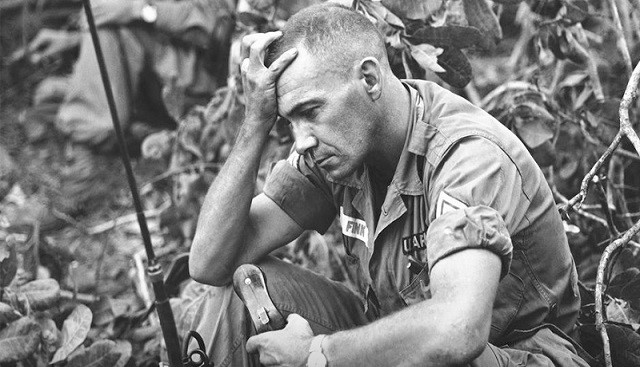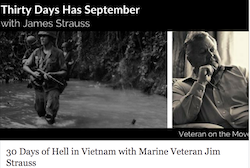FROM THE WILDERNESS
The Forgotten Soldiers
By James Strauss
The nation spends about $88,000 for each living veteran who qualifies for its services. Where does that money go? Almost all of it for administration, care givers of all kinds, and facilities. Direct payments to disabled veterans comes to less than one quarter of the three hundred-billion-dollar VA budget. The average disabled veteran gets about a thousand dollars a month while the average employee providing services receives a ten thousand and more, sometimes much more, than that. The attitude of the Veterans Administration towards vets is openly and publicly supported by positive sounding posters, glowing advertisements and patriotic sayings (as in, “thank you for your service”).
The reality is entirely different. All military veterans lose their hard-sought-after ranks when visiting the V.A. Officers are just like enlisted and there is no ‘pecking’ order at all even among NCO’s or other ranks. Decorations are not recognized at all (except the possession of a Purple Heart allows for quicker service for some combat vets). Yet, the rank of those rendering services is fully evident at all times. Doctors are ‘doctors’ and so on (go ahead and try to call any of them by their first names, if you could find out their first names!) There is no recognition at all for the difference between combat survivors and other veterans (combat veterans make up less than four percent of all veterans receiving services) and combat veterans usually have rather substantial emotional issues.
Most Veterans hospitals have police officers stationed at their entrances. Those officers are not there to protect the veterans or prevent terrorism or any of that. They are assigned there to handle and control veterans who might get upset by admissions or treatment, and there’s. a good bit of that going on. Those police stations inside the veteran’s facilities have full access to all veteran’ medical records so they can best deal with mental issues, such as PTSD. Any veteran acting out can expect to be subdued and removed from the facility. Parking outside veteran’s facilities is policed by federal officers, not local police. Any citation, or more, has to be handled by the nearest federal court, not something local, and the can be very problematic and expensive for any veteran who gets into such trouble.
There is a program called Community Care that allows for veterans to receive medical services from private practitioners, but the veteran must prove that his or her primary residence is at least 45 miles away, as the crow flies (although that’s not well described). That private sector care must be applied for in writing and then approved by the nearest hospital personnel to where the veteran lives. That approval does not come from a doctor but from a Community Care office at the hospital…and those offices are neither kind, quick in responding or very agreeable at all.
V.A. hospitals require an appointment to visit, unless one is going into the emergency room for a just cause. Identification is checked at the front door. This came about because of Covid, but that practice has not changed as Covid has receded.
Mental health care is something that has all but disappeared from the V.A. service capability. Forget community care psychologists or psychiatrists, as none will ever be available outside the hospital itself. Inside the V.A. facility mental care can be had but only by booking well in advance (like six months), which is usually enough time to make the veterans with troubles either go away, become homeless or die.
If a veteran lives a good distance from the primary care hospital assigned, then mileage to and from the facility is paid. Except it’s not. The veteran has to file a form to apply for the payment that then has to be deposited to an acceptable banking account directly at some time in the future. Filing the form is difficult, as it is intended to be.
The V.A. system in America is extensive and expensive, but it is not set up to truly care for veterans at all. The system is set up to reward the people who are giving the care, not those receiving it. There’s little discussion about unemployed vets being given jobs (not sent out to find jobs, as they do that by themselves). As with the rest of the veteran’s acceptance back into society following or war or other service, the public loves them…as a group, but has little or no use for them individually. Most American’s, by far, never served, for example, Wisconsin has five million residents but only about 320,000 veterans.
Sociobiologically, male veterans who served in combat are not beloved by males who did not serve, for whatever reason. They are held up to be honored but then are put down as having been too much when it comes to ‘becoming a man,’ kind of a thing. The Veteran’s Administration, with certain exceptions, follows that attitude without ever saying it follows that attitude.
Enter the V.A. facilities with trepidation and an expectation that, although the medical condition you entered the facility to try to get taken care of will likely be taken care of, you will not leave that facility, go to your car, sit inside it, and feel good about either yourself, the people who treated you, nor your country. The Administration is there to fix your medical problem not to make you feel better about anything.
















Don's Miss any Updates or New Chapters
Join our mailing list to receive the latest news and updates from our team.
You have Successfully Subscribed!